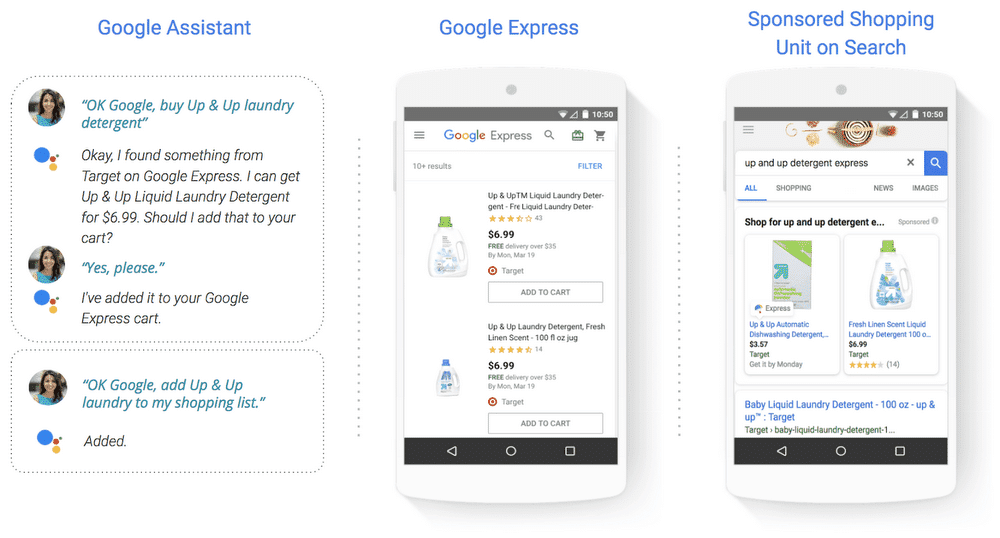The COVID-19 crisis has disrupted the marketing to the point where it will never be the same. Consumer trends are changing forever, and businesses across all niches are scrambling to keep up.
The post-pandemic marketing world is entering the “next normal” which is defined as “the post-viral era” in which digital transformation is no longer a future goal but a matter of the business survival.
Here are five digital trends that are being sped up by the global COVID-19 crisis.
The coronavirus epidemic and global lock-downs have caused companies across all the sectors - including healthcare, education, and even transportation - to adopt a wide variety of devices and new technologies enabling remote operations.
This Internet-powered network of smart devices that connect, interact and exchange data is referred to as “Internet of Things”. The best known smart devices that are already finding their ways into our lives are: smart watch, smart security systems, smart speakers, (partially) self-driving cars, etc.
[bctt tweet="With smart inter-connected devices, everything in the consumer’s house suddenly becomes an ecommerce channel driving and automating shopping behavior." username="relevance"]
Apart from autonomic shopping decisions and technology-powered purchasing experiences, IoT also opens up the ability to leverage the data those devices collect to understand customers’ needs for advanced personalization and machine learning capabilities.
To make your products part of these machine-powered buying decisions, build your presence on both Amazon and Google. Both of these brands are powerful IoT players. Amazon has Dash Buttons reminding you to reorder your previously purchased products based on your shopping patterns. Google has Shopping actions: allowing brands to make their products across multiple Google-run devices (Android, Google Home, Google search, etc.)

With lots of large and small brands rushing online to make up for the lack of brick and mortar sales, it is easier to get lost on the crowd of emerging competitors. If you haven’t yet started experimenting with new customer acquisition and engagement tactics, now is a good time to start.
[bctt tweet="Focusing on intent optimization is the first step in getting your traffic engaged as this strategy aims at giving your site visitors exactly what they were searching for." username="relevance"]
Now is good time that we should re-evaluate our landing pages and analyze just what kind of audience they are attracting how to optimize them for search intent better:
Image source: TextOptimizer
Even social media traffic requires an extra effort to engage your target audience.
According to the cosmetics marketing report, a good engagement strategy can actually turn your business around. As an example, one of the fastest-growing cosmetic brands called Bambu Earth was able to turn their marketing results around by implementing an online “Skin Quiz” which served as both important audience data source and engaging sales funnel:
The overall digital literacy is growing fast. Generations that had been previously shying away from technology are now readily buying groceries online or jumping into a video call with family and friends.
The result: the buying journeys are becoming more diverse and consequently harder to predict.
[bctt tweet="Your website needs to engage customers quickly at each “touchpoint” making purchasing experience as fast and hassle-free as possible." username="relevance"]
Adopting new ways to monitor your site users’ browsing and buying journeys is a must.
Using various customer journey analytics tools remains a good idea, but you need to also explore new tools.
There are also several emerging ecommerce analytics solutions that can help you clearly understand how consumers are interacting with your sales funnel:
Image source: Finteza
As customers’ buying patterns are quickly changing, marketing becomes more complex (think omni-channel marketing, global marketing, multi-location marketing, lead verification, serving personalized + dynamic content, real-time marketing, etc.).
As digital marketing is getting more and more complicated, many digital marketing tasks are impossible without automation, e.g. keeping track of multiple local business listings, monitoring social media sentiment, etc.
The good news is, marketing automation can boost sales productivity by ~15% (Source: Invesp), so it is a smart idea anyway.
The key is finding a reliable marketing automation partner that offers features you need without breaking your budget. It can be as simple as picking a smart email marketing platform (here’s a good list of email marketing solutions which offer marketing automation features).
Adding a chatbot marketing solution to your company’s toolset is also a good idea.
With so many people forced to adopt so much new technology, privacy is going to become a hot topic again. We already saw Zoom hit hard by privacy scandals. There have been numerous other scandals which even prompted new legislation.
With privacy becoming the center of attention again, is your business prepared.
At the very least:
Digital marketing has always been an ever-changing industry but with COVID-19 crisis upon us, the change has been developing at an unprecedented rate. The web is getting even faster, engaging the customer is getting even more challenging. The answer is in building cross-platform presence and using the aggregated data from all the channels for advanced analysis capabilities.